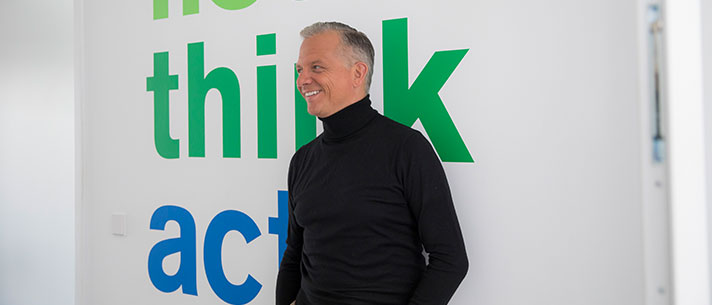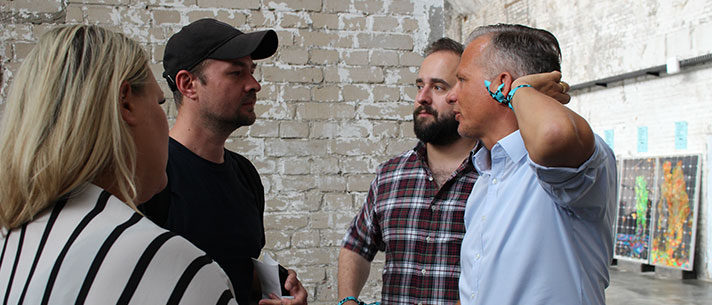This is a guest post by Matthias Kroener, a Bavarian who created Fidor Bank and then disappeared into the depths of gaming.
Banking on the game
The difference between gaming and gamification in banking
Back in 1994, when I founded Direkt Anlage Bank (the first European discount broker) with a number of colleagues, it was our ambition to democratise financial markets, make “shareholder participation” easy and create a broad “shareholder culture”. We failed. Not because we did not have customers; we had plenty. But instead of sharing our vision of democratising financial markets, customers wanted to “play” the markets and enjoy the thrill of quick wins and losses, just as one would in a casino. Why should we offer banks and trading services when people simply want casinos?
Were those customers educated about trading? Most certainly not. We witnessed a good amount of people failing, losing their hard-earned cash. Following regulatory requirements, we sent our customers books about the secrets to successes in financial markets, but did not achieve the intended results. My guess: 95% of those books ended in the bin.
The situation has not changed much since the 1990s. The story above described the challenges facing people who dealt with personal finance and financial markets. What about those who are not even dealing with their financial affairs? In developed markets, approximately 40% of the population in the US and approximately 45% of the EU population are categorised as financially illiterate. In emerging markets from Asia and Africa about 50-60% of the population do not even have access to financial services. In parts of the world, addressing issues in financial literacy and inclusion meant first addressing literacy, doubling the challenges for delivering meaningful financial content.
The challenges are not new. Various initiatives driven by G20, the World Bank, regulators and governments around the world aim to promote financial inclusion and education, with the goal to stabilise and improve local societies. But it is difficult to make financial literacy an engaging and exciting topic that people would be interested in, especially since the topic has mostly been presented in the form of classroom theories, complex charts and boring numbers. Have you ever tried to learn about mortgages, asset allocation, inflation, loans, compound interest and capital gains etc. without any support? It can be extremely frustrating.
Now, here is the million-dollar question: How to deliver financial literacy as an interesting and fun activity for the user?
Gaming is the solution to this dilemma.
Game-based learning has long been proven to be an engaging and productive way for delivering education to learners of all levels. Videogames, in particular, are an effective method to reach every corner of the world. For example, there are three billion gamers worldwide, and the number is growing.
People love games because the ultimate objective of a game is to provide the best user experience possible. Games support players’ wishes of becoming “better” by giving concrete tasks and achievable goals that fit with the players capabilities and offering timely reward and feedback by eliminating distractions with fun and engaging interactions. Players naturally learn and improve skills, without the obvious educational experience of “being taught” and “studying”. In addition, games make sure that they provide fun, ease and convenience for their audience to increase visits and duration per visit. And, ultimately, the user experience that each game aims to offer is flow.
“Flow” means the state of operation in which a person performing an activity is fully immersed in a feeling of energised focus, full involvement, and enjoyment of the process of the activity. Therefore, games must try to ensure that it is never too easy (and hence boring) or too complicated (and hence frustrating). Would a bank offer its products & services the same way?
Joining the dots and recognising the large population of financially under-educated or under-supported consumers, and the very broad global popularity of video games, we created: Tradelite Solutions. Tradelite’s vision is to make complex financial knowledge easily accessible and fun for billions of people by bringing real financial data into financial entertainment video games. If you would allow me a simple analogy: Before a pilot’s first take-off in real life, he or she would be well advised to have practiced it in a flight-simulator many, many times. That is what we are trying to create for people using money and, to make sure that the games are fun, attractive and would be loved by players, all of our financial entertainment games are created by true game developers.
Learning from various SaaS platforms and game development companies, Tradelite Solutions created a financial entertainment game development platform that is complimentary to existing engines such as Unity and Unreal. The system consumes and transforms financial content and financial market data into game mechanics that game developers can leverage to create a wide variety of video games, of any genre. By using our game development platform, in combination with Unity for example, game developers can create high quality fun games of any genre with unique financial content.
Just like in open banking, Tradelite is creating a true ecosystem of dynamic stakeholders: game developers create games; the games are being offered in Tradelite’s game marketplace to distributors from any sector that provides financial services, financial information, financial education and customer engagement. Tradelite enables financial institutions to become distributors of meaningful financial entertainment video games.
Why should financial institutions even think of distributing video games to its customers? As stated in the opening of that article, the stiff challenges of financial inclusion and financial education need to be tackled. Financial institutions can utilise video games as a method of customer acquisition, customer engagement, education and re-activation. Video games provide an entertaining channel to create and maintain contact with the customer, increase customer life-time value and transport the messages of the brand without being boring or frustrating. And to achieve “the flow” effectively, one must leave game development with the experts: the game developers.
Finally, I would like to highlight the difference of video games and gamification. Video games offer no to low risk education, entertainment and some thrill, while gamification is often a “fun-camouflage” to products and services with real material risks. The two, games and gamification, may look similar, but are certainly not the same.
Being an open-minded banker over the last 28 years, I did not understand the power of video games and its relevance in financial literacy, until now. Follow me on this journey to discover a new world full of new opportunities to embed and deliver financial services in totally new ways and, together, we can bring customer centric innovation back to the centre stage of the fintech space.











